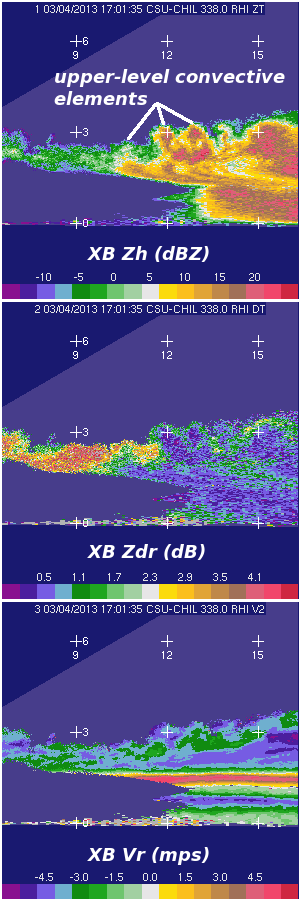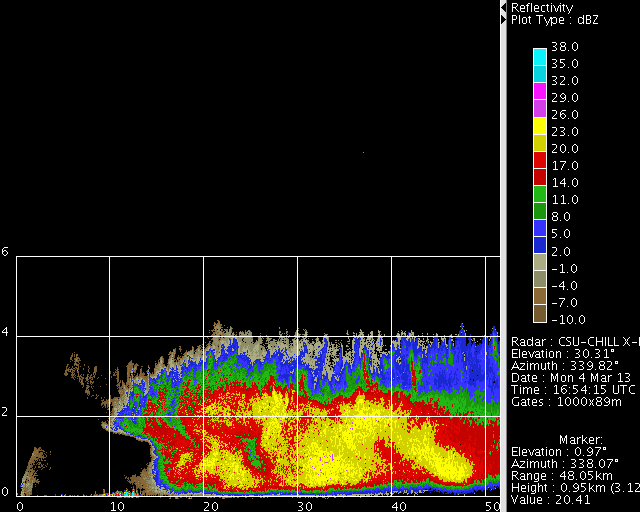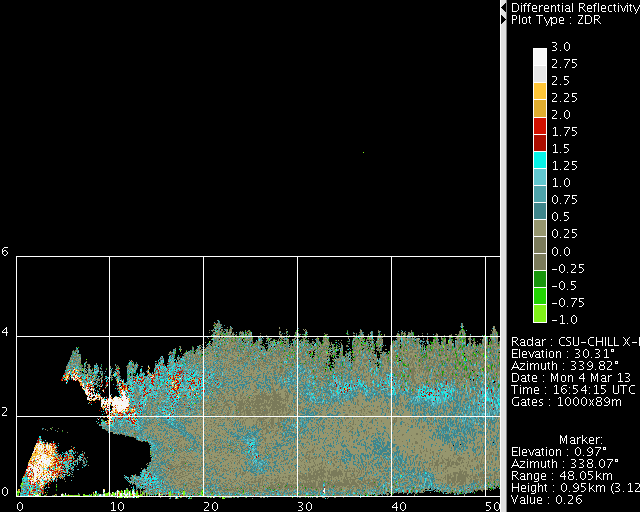High time resolution RHI's through a snow band: 4 March 2013
Introduction
During the mid-morning hours of 4 March 2013, the functioning of several elements of the signal processing software used in the CSU-CHILL X-Band channel was being examined. To provide a steady stream of input data, the antenna controller was adjusted to repeat two sweep RHI volumes (upward sweep on azimuth 338 deg and downwards on 340 degrees). These azimuths intersected a band of light snow that was advancing towards the radar from the north. This scan pattern caused each RHI sweep to be repeated at intervals of ~1 minute. Animations of the resultant high time resolution observations reveal several organization features of the snow band.
dBZ loop
The cellular appearance of the reflectivity structures in the upper ~1/3 of the echo system suggested that convection was occurring on horizontal scales of a few km. In the lower levels of the echo system, the reflectivity patterns were suggestive of snow "streamers" with orientations that became curved as they fell through the vertical variations in the horizontal wind field. Towards the later time in the loop, the slope of the > 20 dBZ (yellow) reflectivity streamers with respect to height reversed.
|
|
||
|
Zdr loop
|
|
||
|

Reference:
High Resolution Measurements of Cyclone Structure: the Profiling of Winter Storms Project (PLOWS)
Grand Ballroom (William Penn Hotel)
Greg M. McFarquhar, University of Illinois, Urbana, IL; and R. M. Rauber, B. F. Jewett, K. R. Knupp, P. S. Market, D. Leon, D. M. Plummer, A. A. Rosenow, M. K. Peterson, and M. Pitcel
Paper 208 at 35th AMS Conference on Radar Meteorology, Pittsburgh, 26-30 Sept. 2011

